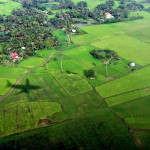Industries
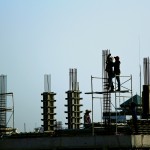
Industries in Cambodia (excluding extractive industries and mining) are mostly within the garment, light manufacturing, agricultural, construction and tourism sectors. The Royal Government of Cambodia has set directions to transform Cambodia into a middle-income economy by 2030 and high-income country by 2050, as mandated in ...
Renewable energy production
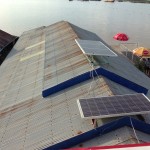
Renewable sources of energy include biofuels, solar, wind, tidal and geothermal energy. Fossil fuels such as petroleum or coal are not renewable. ...
Agricultural commodities, processing and products
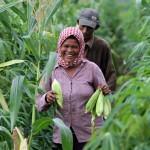
Farmers harvest corn from their farms, Cambodia. Photo by World Bank/Chhor Sokunthea, taken on 17 July 2013. Licensed under CC BY-NC-ND 2.0Key agricultural commodities and products include rice, rubber, corn (maize), vegetables and fruit, and cassava (tapioca). More than 90 percent of Cambodia’s agricultural exports ...
Ministry of Education, Youth and Sports

H.E. Hang Chuon Naron and Julie Chung in the inauguration of the Rice Academy, Cambodia. Photo by U.S Embassy Phnom Penh, take on 17 September 2014. Licensed under CC BY-NC-ND 2.0In 1996, the Ministry of Education, Youth and Sport (MoEYS) was established.43 Its organization and functioning ...
United Nations

Secretary-General António Guterres (right) meets with Samdech Akka Moha Sena Padei Techo Hun Sen, Prime Minister of the Kingdom of Cambodia in New York. Photo taken from the UN website on 22 September 2022.The United Nations (UN), founded in 1945 and guided by the UN ...
Forest policy and administration
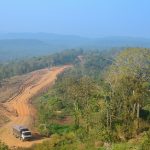
Logging truck in Mondulkiri protected forest , Cambodia. Photo by Global Water Forum, taken on 23 February 2014. Licensed under CC BY-NC-SA 2.0Cambodia is deeply concerned about deforestation. While the country seeks fast economic development, forests represent a tremendous national treasure. In order to help ...
Concessions
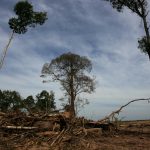
A land concession is a grant of rights over an area of land for a specific purpose. In Cambodia land concessions can be granted for various purposes, including agribusiness, redistribution of land to the landless and land-poor, infrastructure development, mining and fishing. They have been ...
Agriculture and fishing
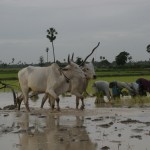
Rice farmers working in the field, Kandal province, Cambodia. Photo by ILO/ Khem Sovannara, taken on 12 July 2007. Licensed under CC BY-NC-ND 2.0.Agriculture continues to play an important role in Cambodia’s economy, but it provides a livelihood for a smaller proportion of today’s population ...
SDG 2 Zero hunger
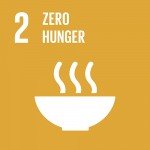
Sustainable Development Goal 2 (SDG 2) seeks to “end hunger, achieve food security and improved nutrition and promote sustainable agriculture”, ensuring universal access to safe, nutritious and sufficient food for everyone at all times. Likewise, it provides a much more comprehensive approach to the issue ...
Economy and commerce
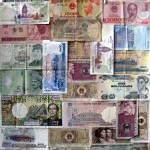
Counting money. Photo by Aaron Gilson, taken on 5 April 2013. Licensed under CC BY-NC-ND 2.0.Cambodia re-opened for international trade in the 1980s, opened up to foreign investment in 1994, joined ASEAN in 1999, and became a member of the WTO in 2004. Its bilateral ...
Health care policy and administration
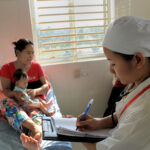
A quality and effective healthcare system that provides equal access to services is critical to ensure the well-being of any population. Both developed and developing countries strive to bring improvements to their healthcare systems. Cambodia, in particular, has undergone significant transformations in terms of healthcare ...
SDG 3 Good health and well-being
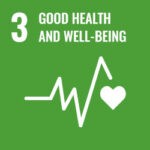
table td { border: 1px solid; } Sustainable Development Goal 3 (SDG 3) seeks to “ensure healthy lives and promote well-being for all at all ages”.343 The goal encompasses a wide range of mortality rates, infection numbers for many diseases, tobacco use, suicide rates, road ...
Mining
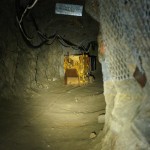
The mining sector in Cambodia is mostly undeveloped, and active mining enterprises are typically small-scale quarries producing materials for construction, such as laterite, marble, granite, limestone, gravel and sand. There is no industrial-scale extraction of minerals, although many exploration licenses have been granted to ...
Sugarcane
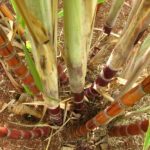
Growth in sugar production in Cambodia has created significant potential for sugarcane-based biofuel production. That potential has not yet been realized, though recent foreign investment may give rise to change. There are several types of sugar crop: sugarcane, sugar palm trees and sugar beets. Sugarcane ...
Labor arbitration
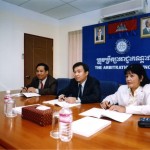
Arbitration Council in session, Cambodia. Photo by ILO (Asia and the Pacific), took on 8 June 2012. Licensed under Attribution-NonCommercial-NoDerivs 2.0 GenericThe Arbitration Council was established by the 1997 Labor Law. However, the Arbitration Council just opened its doors to serve employers, employees, workers and ...
Law and Judiciary

National Assembly of Cambodia. Photo by Sorn Seang Heng, taken on 12 June 2010. Licensed under CC-BY 2.0.With a constitution written a little more than 20 years ago, the current rule of law in Cambodia is relatively new, and continues to be shaped by many ...
Banking and financial services
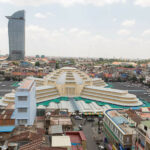
According to the Annual supervision report 2020 by the National Bank of Cambodia (NBC), the key bodies in the banking system consists of:51 commercial banks12 specialized banks75 microfinance non-deposit taking institutions6 microfinance deposit-taking institutions245 rural credit institutionsIn addition, there are financial leasing companies, third-party processors, ...
SDG 8 Decent work and economic growth
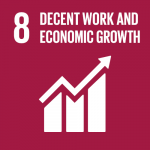
SDG 8 – “Promote sustained, inclusive and sustainable economic growth, full and productive employment and decent work for all” – has 10 general targets and 2 means of implementation targets.655 There are 17 indicators. Some of these targets are more relevant for Cambodia than others. For ...
Civil and commercial litigation
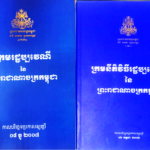
Since 1993, the Royal Government of Cambodia (RGC) has been working to reform the country’s legal framework, and in particular the application of justice, to provide a clear and fixed procedural system to ensure respect for individual rights and equality before the courts.691 In theory, ...


